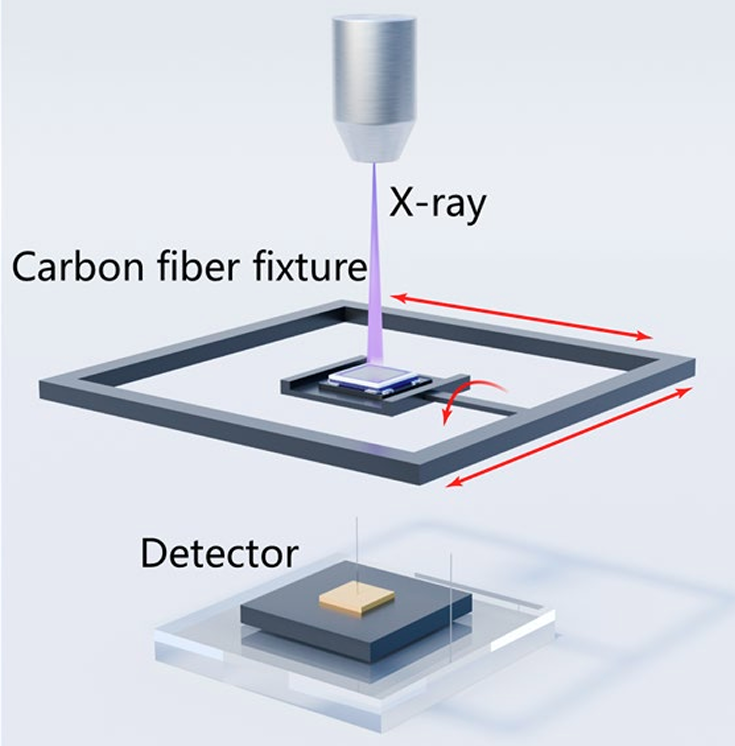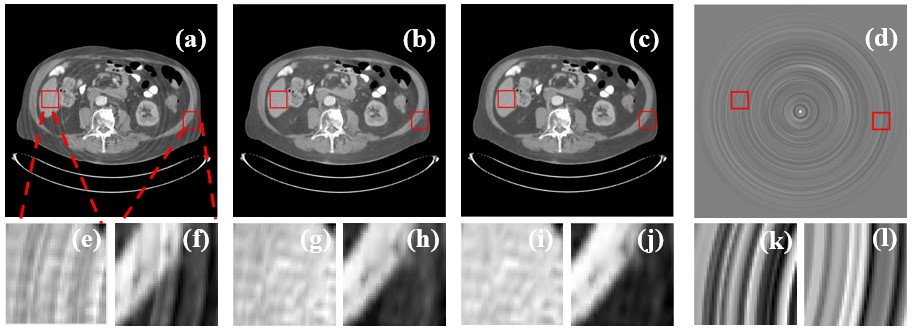
AC-bias Capacitance Imaging Enables Stable, High-Performance Perovskite X-ray Detector
X-rays are widely used in medical diagnostics, security screening, and industrial non-destructive testing for their ability to penetrate materials and reveal internal structures.
Metal halide perovskites are soft-lattice semiconductors with inherently high ionic concentrations, which have X-ray sensitivities several orders of magnitude higher than conventional semiconductors such as silicon, amorphous selenium, and cadmium telluride. However, due to the weak chemical bond and intrinsic ion migration of metal halide perovskites, nonlinear current responses can arise under both irradiation and direct current (DC) bias, leading to signal distortion and limiting device reliability.
In a study published in Science Advances, a research team led by LI Yunlong from the Shenzhen Institutes of Advanced Technology of the Chinese Academy of Sciences, in collaboration with ZHU Ziyao and XU Xiumin from the School of Integrated Circuits, Anhui University, proposed an alternating current (AC)-bias capacitance readout strategy for metal halide perovskite–based X-ray detectors, overcoming the long-standing challenge of intrinsic ion migration in conventional current readout schemes.
By solving Poisson's equation with ionic migration incorporated, supported by experimental validation, the team revealed that high-ionic-density semiconductors undergo pronounced interfacial capacitance variations between dark and irradiated conditions. They accordingly developed perovskite X-ray detectors that operate under low AC bias, utilizing capacitance readout instead of conventional current readout detection.
This capacitance readout scheme effectively mitigates the impact of ionic motion, preserving interfacial structure and ensuring long-term signal fidelity. Modulation transfer function measurements and imaging results demonstrate a spatial resolution of 167 μm with 150 μm pixels.
The proposed detector of this study achieves a theoretical maximum readout rate of up to 500 Hz per pixel under 1-kHz AC bias, matching the performance of conventional a-Se/TFT X-ray imaging systems, and achieves greater cost-effectiveness and scalability compared to high-frame-rate CMOS/CdTe-based detectors.
Furthermore, the team achieved high-resolution three-dimensional internal structure reconstruction with the proposed detector based on polycrystalline MAPbI3, highlighting its potential for applications in medical diagnostics, nondestructive evaluation, and security screening.
This work introduces a novel imaging modality for perovskite detectors, paving the way for stable, low-cost, and scalable computed tomography (CT) systems.

Schematic diagram of the experimental setup for the 2D imaging and 3D reconstruction. (Image by SIAT)
File Download:
